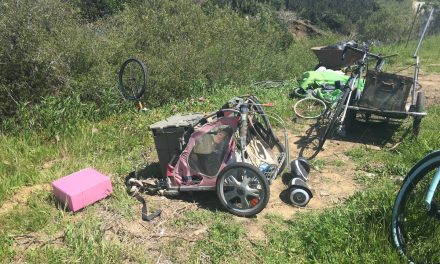By NEIL FARRELL
Morro Bay City Council approved two more contracts for its Water Reclamation Facility Project, as work is set to begin on the second phase of the overall project.
On Jan. 7, the city council voted to award a contract “not to exceed” $264,918 to Cogstone Resource Management, Inc. Cogstone is headquartered in Orange, Calif. and will be doing the archeological and paleontological monitoring of the WRF Project’s conveyance system. The underground pipes will run from the treatment plant site on Atascadero Road to the new treatment plant off South Bay Boulevard. The pipeline run is over 3 miles and hundreds of feet uphill.
Last October, the City received four proposals for the monitoring contract — Cogstone, ECORP Consulting, Inc., Albion Environmental, and PaleoWest. The bids were judged on experience and abilities and not price.
The council also awarded a contract for biological monitoring services to Kevin Merk Associates (Merk) in the “not to exceed” amount of $71,310.
Though both of these contracts would seem to limit their amounts, the not-to-exceed reference hasn’t stuck to the companies building the treatment plant, as those contracts have already had dozens of change orders and increased the costs.
In these instances, there can be no cost overruns without “written authorization from the City,” according to the staff report.
These two contracts are among the last hurdles to starting on the pipeline portion of the project. City Manager Scott Collins told Morro Bay Life that work is scheduled to begin in February.
Cogstone’s work will involve monitoring all the trenching the pipelines will require, checking for any archaeological items or Native American artifacts, including possible human remains that could be found.
With known Native American sites already identified, Cogstone will work with three Native American entities — the Northern Chumash Tribe (yak tityu tityu), the Salinan Tribe of Monterey and San Luis Obispo Counties; and the Northern Chumash Tribal Council. Each of which expressed a desire to participate in the project.
They will each be considered “sub-consultant” and paid $100 an hour for monitoring work. Collins said the intent in working with three Native American groups was to “create equity amongst the tribes.” The plan is to have them share monitoring duties, Collins said.
In the current project budget, $550,000 was set aside for archeological and paleontological, and Native American monitoring.
The City drafted a plan for such monitoring in the project’s environmental impact report bringing in the various agencies tasked with enforcing the California Environmental Quality Act or CEQA. Among those was the State Historic Preservation Office. This was also a requirement for using State and Federal monies to pay for the project.
Cogstone also had a contract for monitoring at the treatment plant construction site, raising a potential conflict of interest.
According to the City report, “That work will end by Jan. 15; and, therefore, there will not be a legal conflict of interest with the City hiring Cogstone for this portion of the WRF project because it will not financially impact Filanc/Black & Veatch.”
As for biological monitors, Merk, the City had budgeted $100,000 for the work, and with the contract coming in at $71,000, this too will not require water-sewer rates to rise. The City’s last updated budget, released last September when the pipeline construction contract was awarded, topped $138.6 million.
That’s over $12 million above the cost ($126 million) that was presented to customers in a Proposition 218 vote that approved new rates designed to pay for the project and green-lighted the City to proceed.
Last October, the City got ten proposals from bidders, with KMA (Merk), Althouse and Meade, Inc., Analytical Environmental Services, JBD Environmental Consulting, ECORP Consulting. Inc., Endemic Environmental Services, GPA Consulting, Rincon Consultants, Inc., SWCA Environmental Consultants, and Padre Associates, Inc. all vying for the contract.
The species of concern, i.e., potential habitats that have been identified in previous biological surveys, include the California red-legged frog, the tidewater goby, Moro shoulder band dune snail, and the American badger.
Badgers have been reported in the past on Black Mountain, living in the wilds of Morro Bay State Park off Quintana Road.
Merk, too, did biological monitoring at the treatment plant site as a sub-consultant with Carollo Engineers, the City’s project managers.
As for the actual pipeline work, last November, the City awarded Anvil Builders, Inc., based in San Francisco, a $31.49 million contract. This was for the conveyance work and the project’s third phase, the injection wells, part of the City’s “indirect potable reuse” or IPR system.
That contract was some $7 million over the engineer’s estimate.
Despite the cost overruns, the City’s federal loan came with a 0.83% interest rate, allowing ample wiggle room to avoid raising water or sewer rates.
The City’s final hurdle involves an eminent domain lawsuit between the City and power plant owner, Vistra, over needed easements for the pipelines and recycled-water injection wells that have not been resolved.
Collins said he couldn’t comment on the status of the lawsuit but acknowledged that it is still ongoing and would not delay starting the pipeline project.
The City had a real estate appraisal done and offered $200,000 for both temporary construction easements and permanent utility easements.







